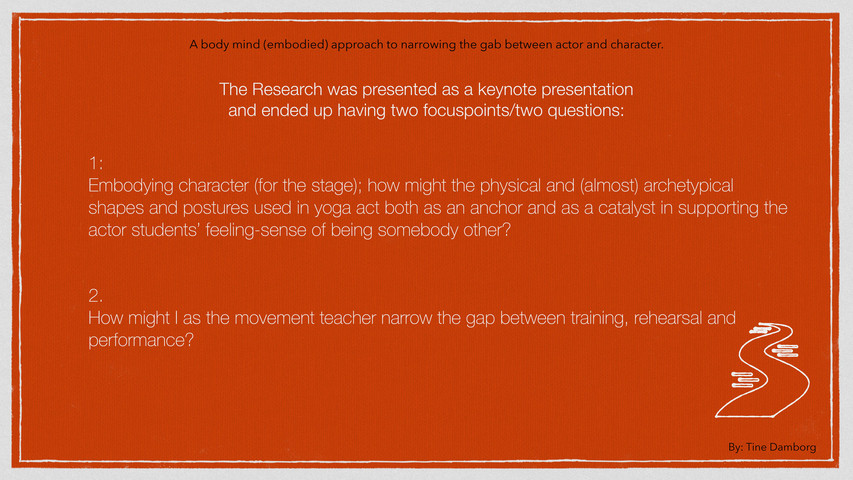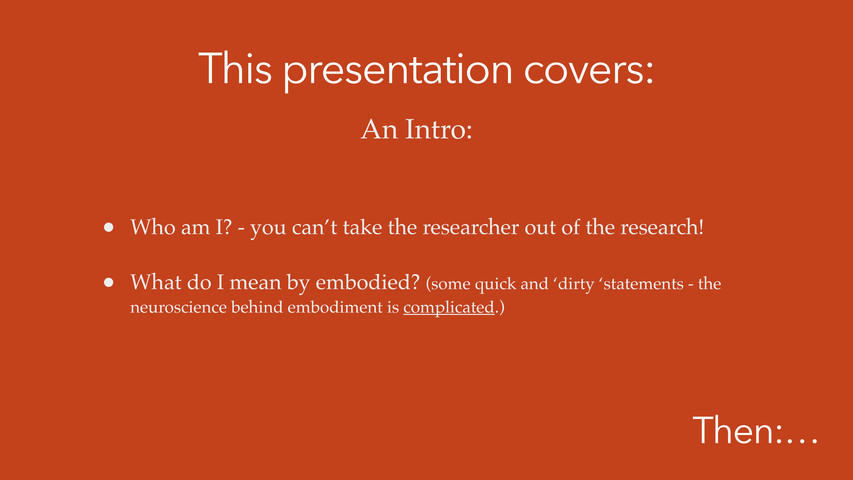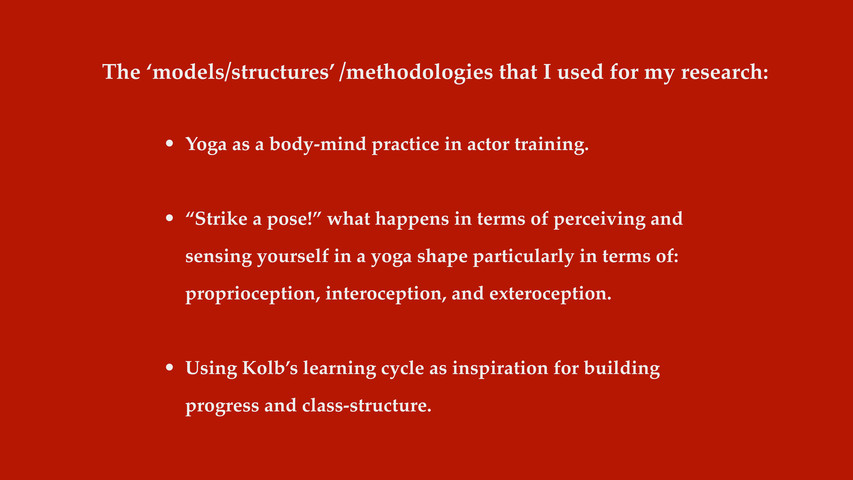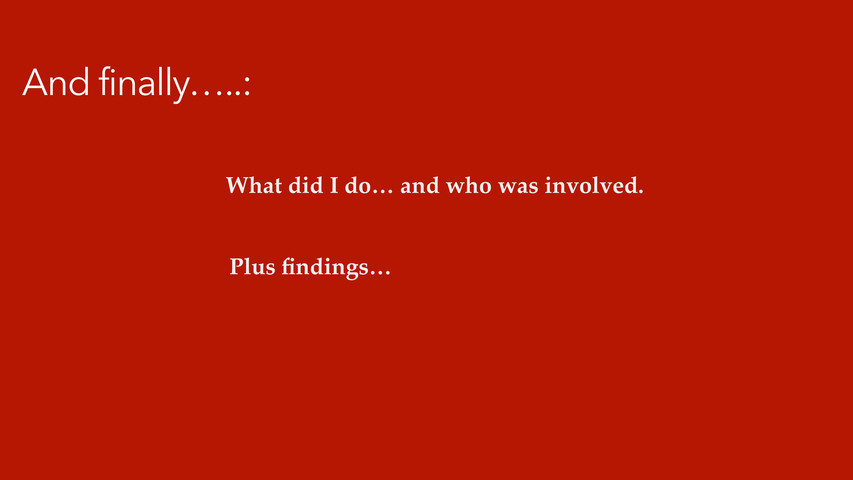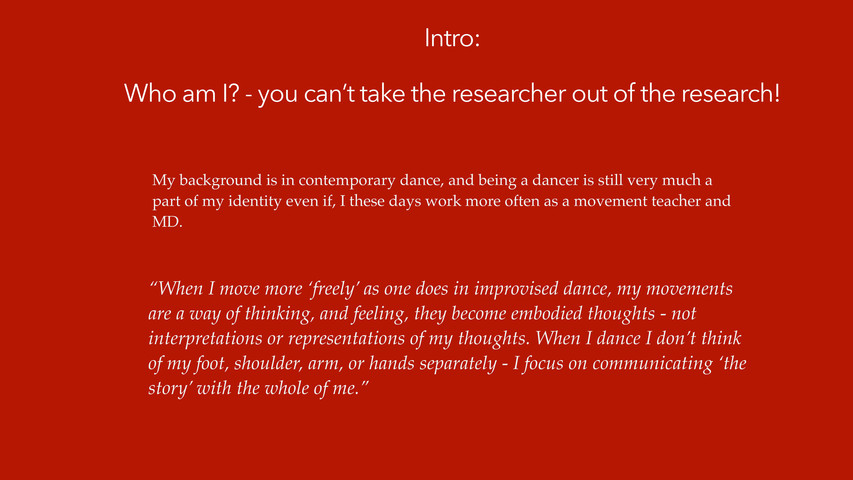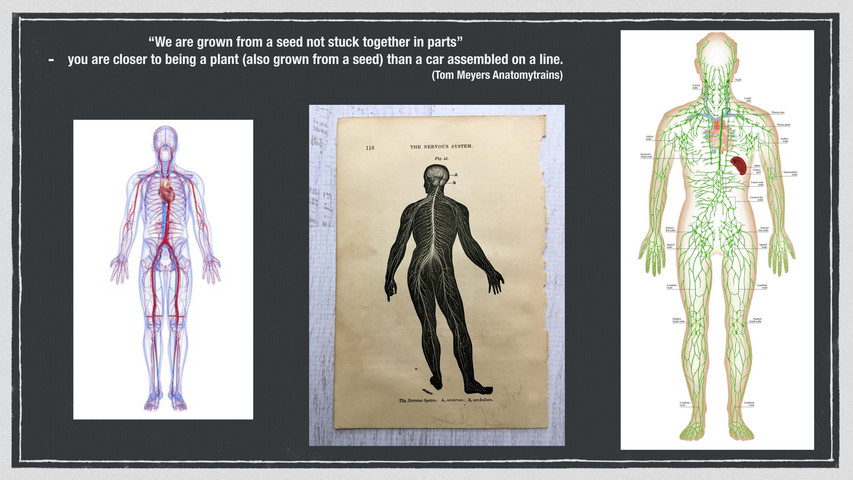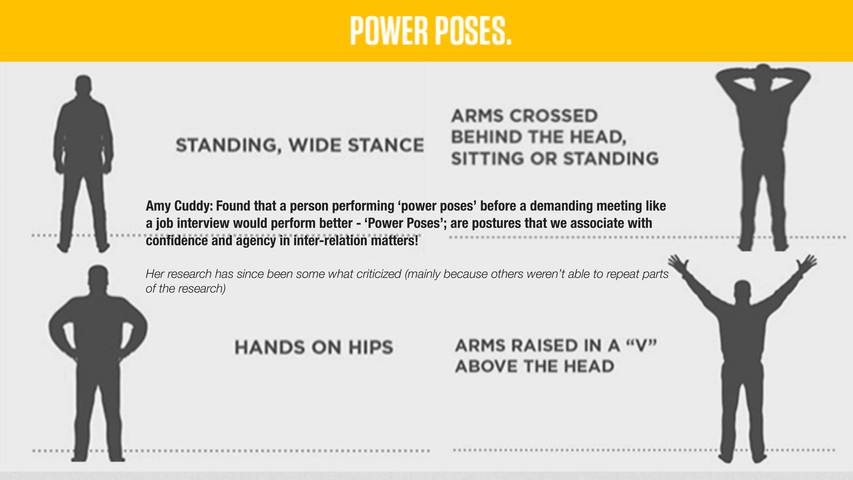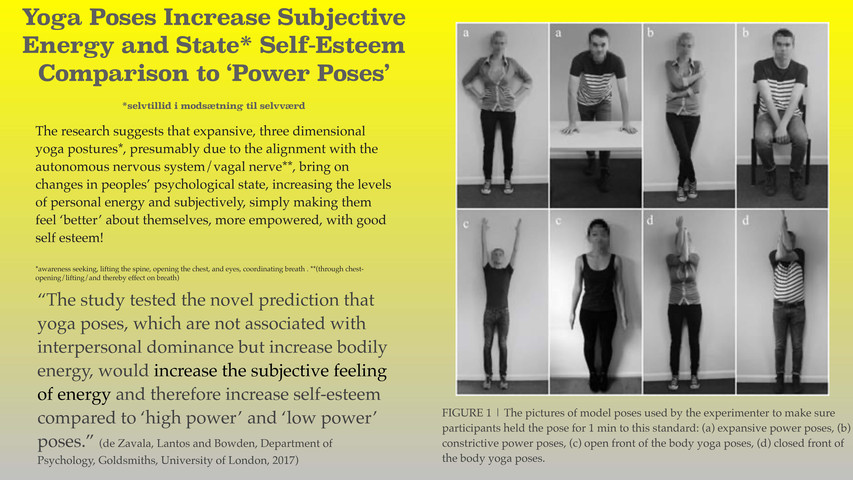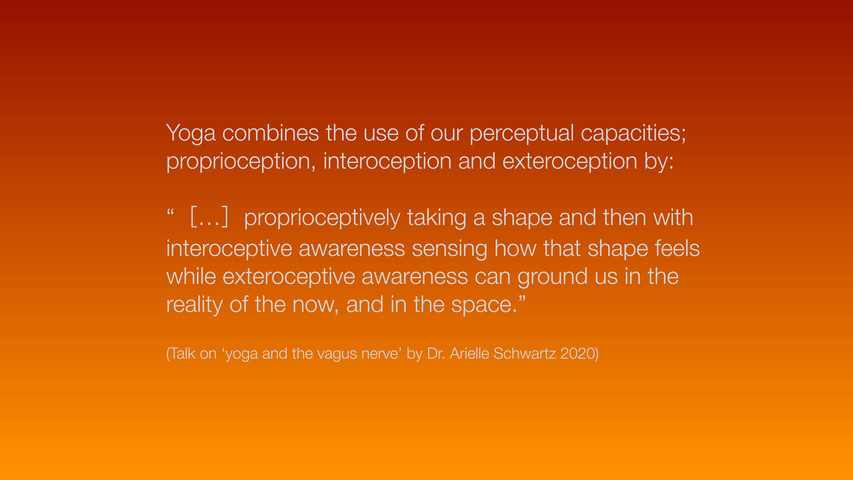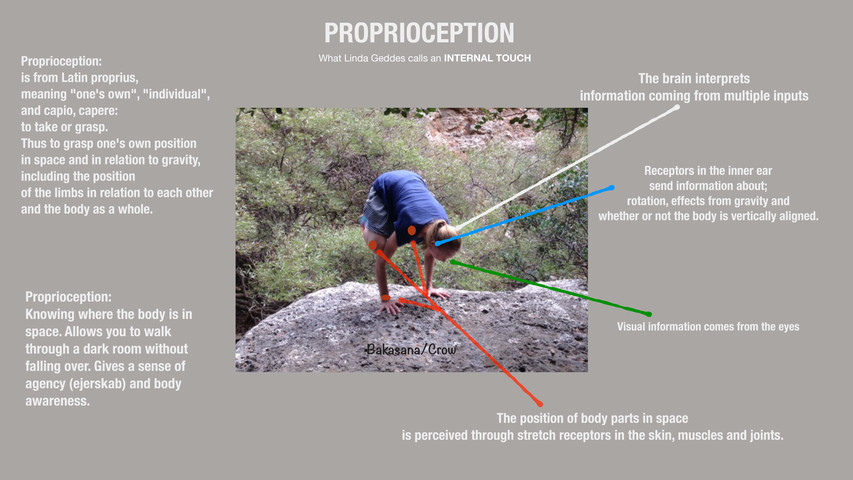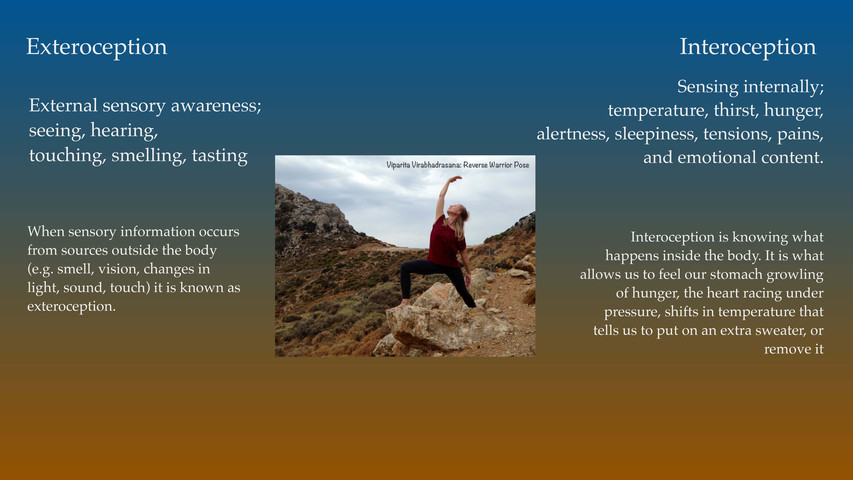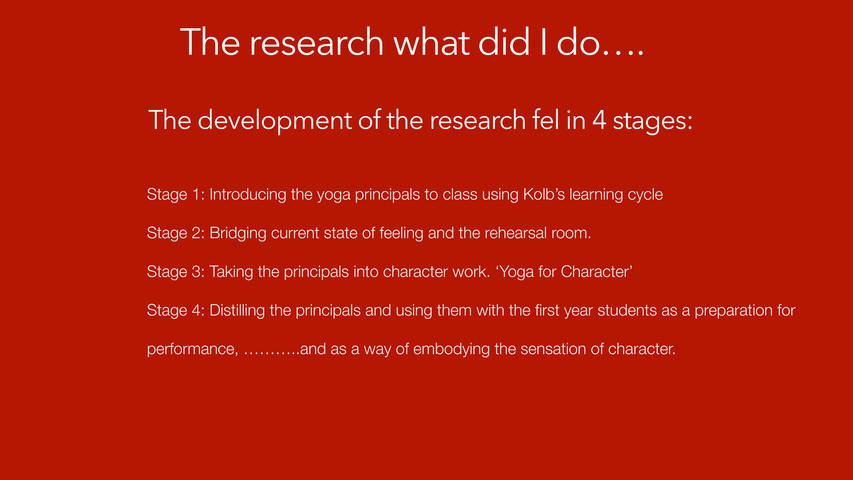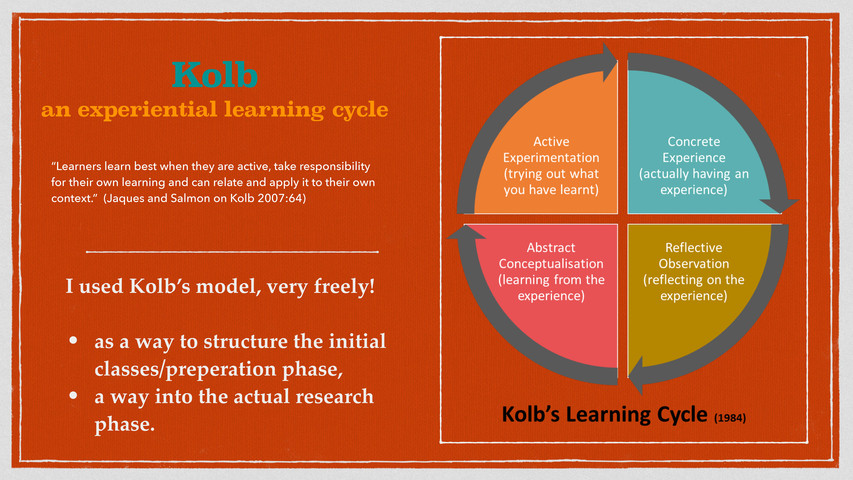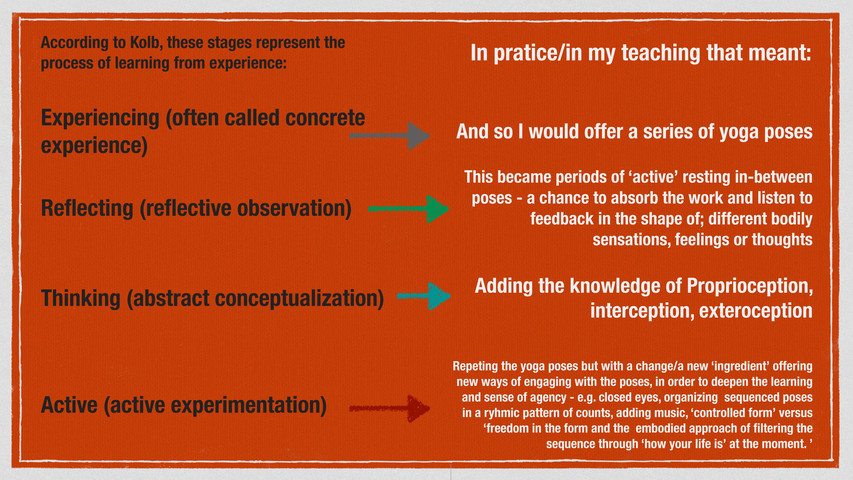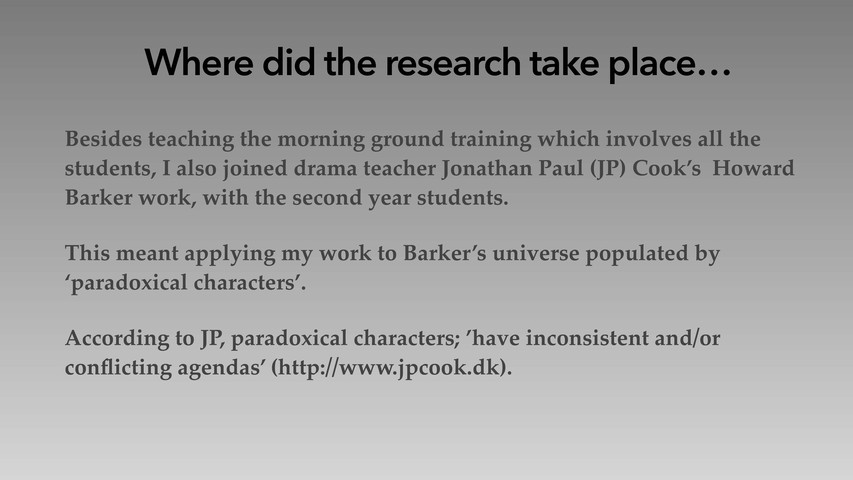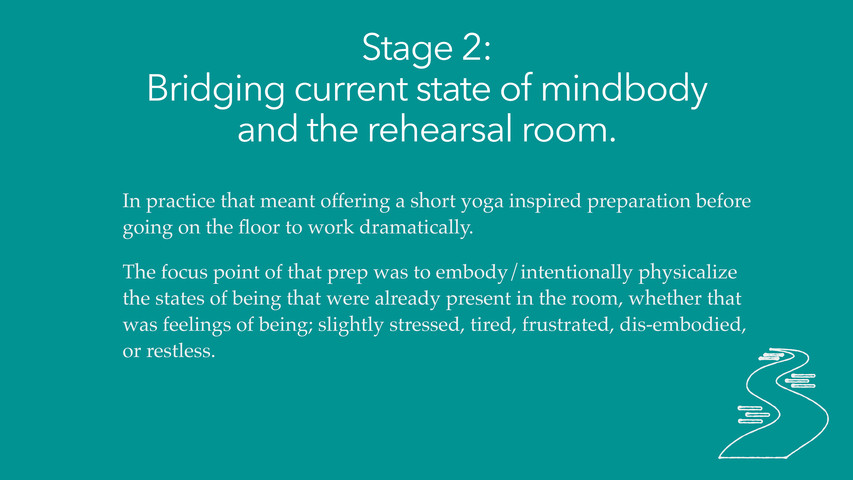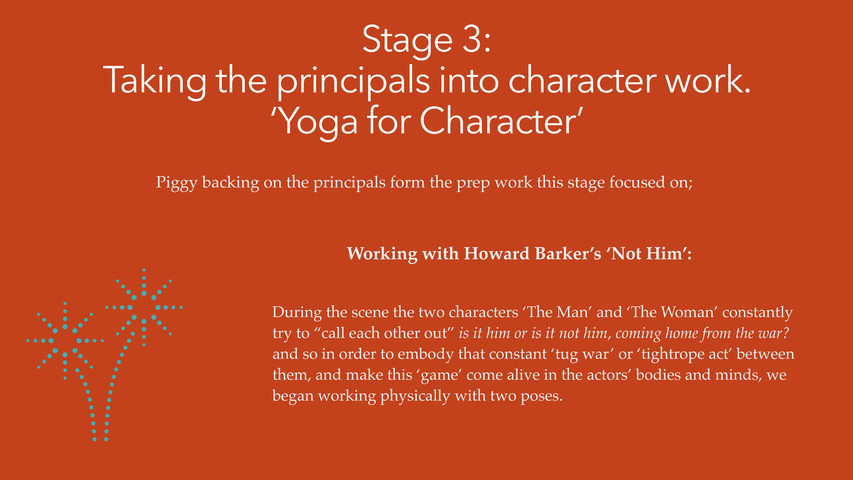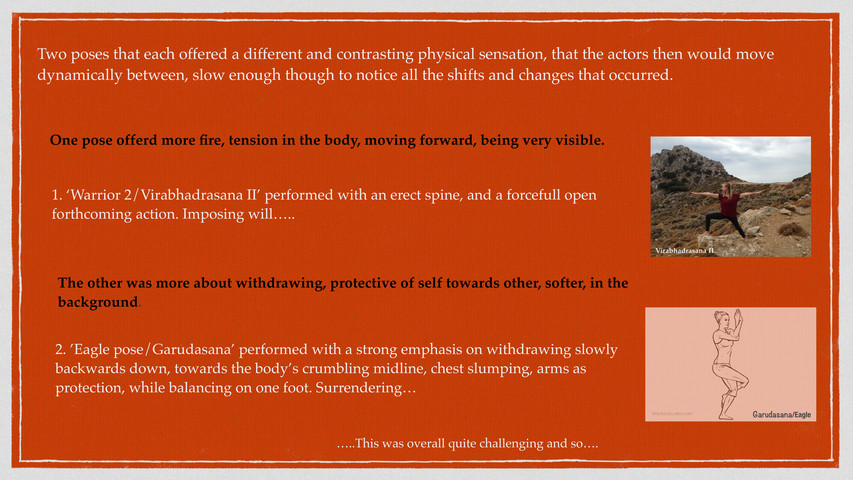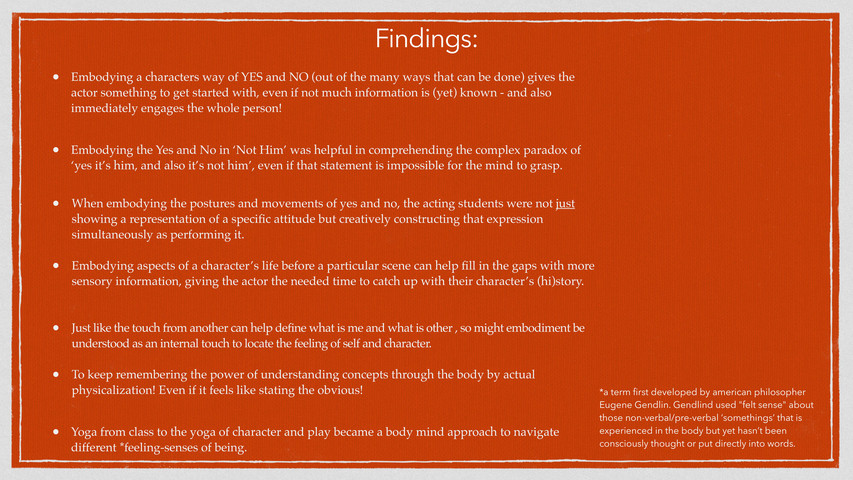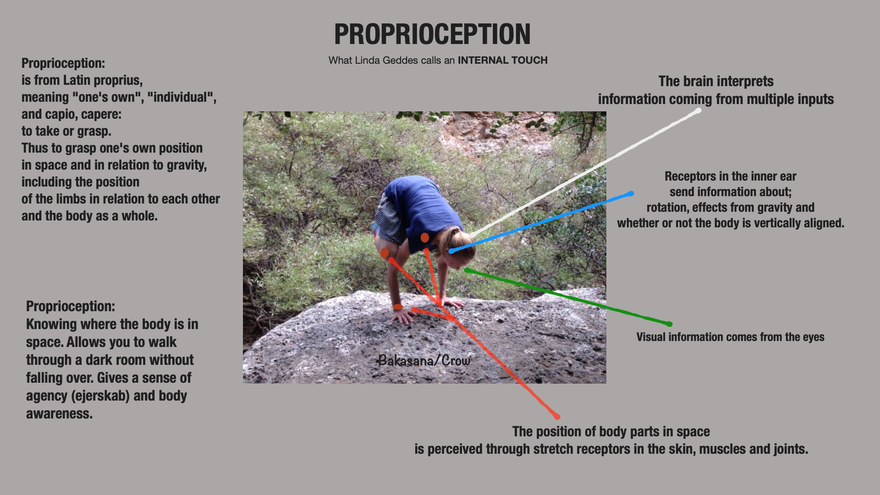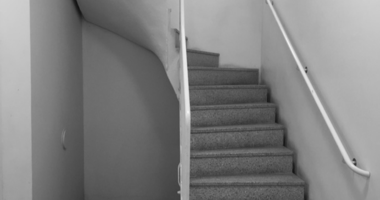A body mind (embodied) approach to narrowing the gap between actor and character

Actor, body and character work
(Embodiment and the actor’s work on character)
How might I as a movement director (MD) and movement teacher use the physical shape of the body as a catalyst in the actor's work with character? (AND how might I narrow the gap between training, rehearsals and performance?)
What did the study contain...:
When the body "takes" a certain shape/‘strikes a pose’ it is visual to an outside eye, but it is also ‘viewed’ or detected internally by the person performing the shape/pose. A response or feedback; a somatic marker of sorts is felt by the person taking the shape/pose. In my work as an MD and movement teacher, I have been working towards fine-tuning the actors’ ability to translate these noticeable felt senses into the work with a character, from rehearsal to performance.
The study is embodied and experiential and lies in the field between phenomenology, physiology, knowledge of the nervous system and pedagogy, and considers how the almost archetypical positions and shapes that one finds in yoga can be used, both as an anchor and, as a catalyst in a process that is physical and ‘bottom up’ in the actor’s work with a character.
When we perform a series of yoga positions/asanas we use and combine our perceptual capacities such as; 'proprioception' (knowing where the body is located in space without having to look), 'interoception' (the ability to i.e recognize hunger) and 'exteroception' (our 5 external senses, seeing, hearing, tasting etc.) together feedback from these perceptual channels guides us towards making sense and meaning out off an experience. In this regard a shape is more than a static position in the room.
In the study, I created a series of 'embodied' yoga classes that was applied to the actor’s ground training on the bachelor's level at DASPA’s acting department in Odense. From here I then developed a new series of ‘asanas’ specifically for the BA2nd year's work on expressionistic acting and texts by Howard Barker, with Jonathan Paul Cook. Here I allowed for a freer interpretation of how to apply the yoga asanas by working ‘backwards’, meaning that the actors playing characters, had the freedom to explore the character’s embodied shape of
i.e saying YES or NO out of the many ways one might say, 'yes' or ‘no’. So instead of exploring the felt sense of i.e Virabhadrasana II (Warrior II) the actors explored first what a feeling of saying YES felt like for the character and then they found/discovered the uniquely equivalent shape that matched that internally felt sense. Other concepts we explored were; passion, pride, oppression, revenge, loss, justice, and that of giving and taking.
Questions we raised a long the way:
- When and how does the shape or the movement make most sense?
- Which felt sensations, feelings, and thoughts provides you as an actor with, interesting and useful information about your character?
- How much muscular tension is needed in order to feel something clearly?
- How much personal energy do you need?
- Can you identify and shift between many modes of attention and is that useful to the work?
- How can I as an actor use an embodied and felt sense consciously? And how do I keep ‘it alive' when the pressure increases during a performance?
